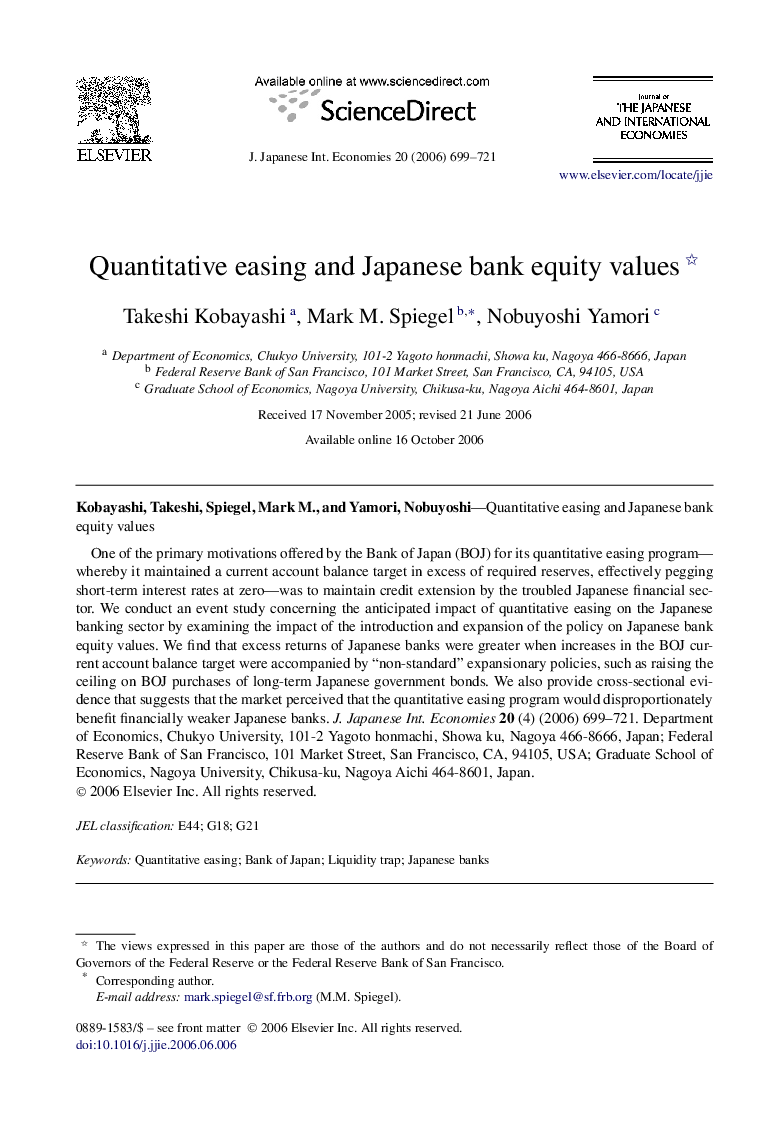| Article ID | Journal | Published Year | Pages | File Type |
|---|---|---|---|---|
| 965423 | Journal of the Japanese and International Economies | 2006 | 23 Pages |
Abstract
One of the primary motivations offered by the Bank of Japan (BOJ) for its quantitative easing program-whereby it maintained a current account balance target in excess of required reserves, effectively pegging short-term interest rates at zero-was to maintain credit extension by the troubled Japanese financial sector. We conduct an event study concerning the anticipated impact of quantitative easing on the Japanese banking sector by examining the impact of the introduction and expansion of the policy on Japanese bank equity values. We find that excess returns of Japanese banks were greater when increases in the BOJ current account balance target were accompanied by “non-standard” expansionary policies, such as raising the ceiling on BOJ purchases of long-term Japanese government bonds. We also provide cross-sectional evidence that suggests that the market perceived that the quantitative easing program would disproportionately benefit financially weaker Japanese banks. J. Japanese Int. Economies 20 (4) (2006) 699-721.
Related Topics
Social Sciences and Humanities
Economics, Econometrics and Finance
Economics and Econometrics
Authors
Takeshi Kobayashi, Mark M. Spiegel, Nobuyoshi Yamori,
